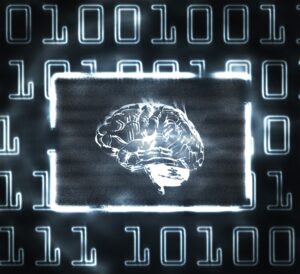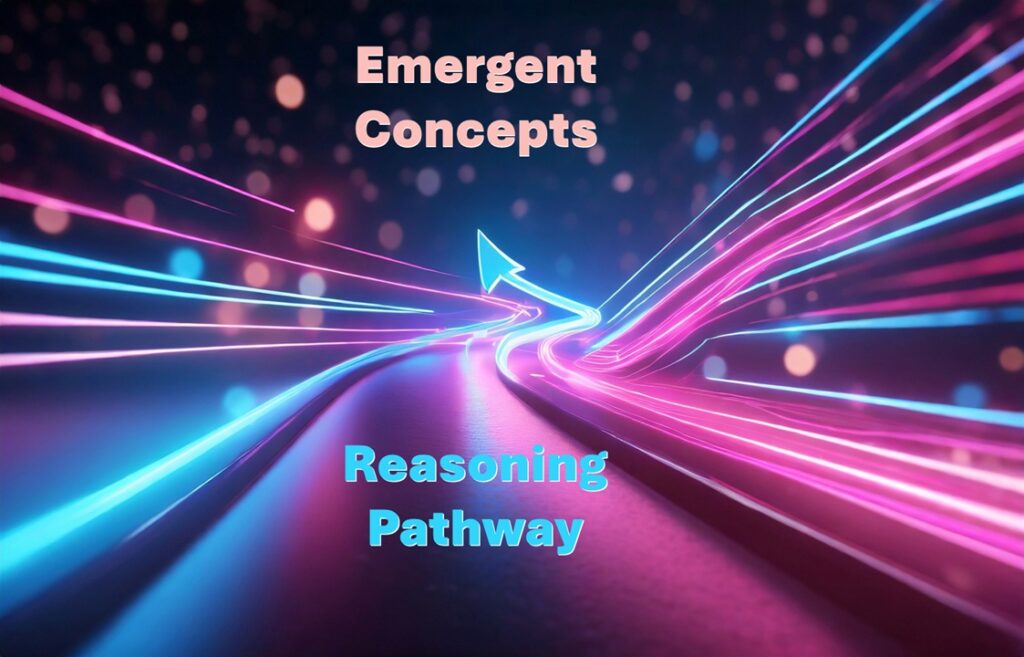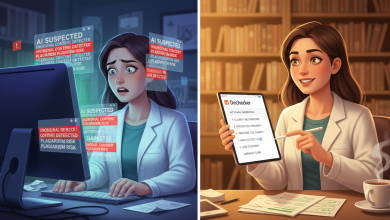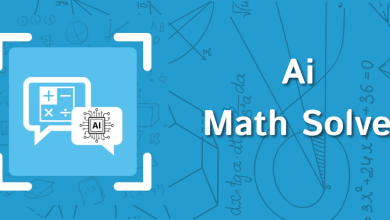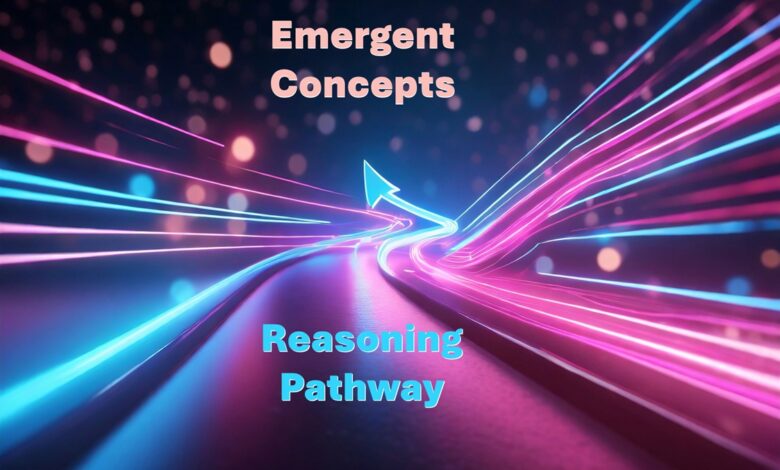
The need for trustworthy Artificial Intelligence (AI) is bubbling up to the surface. In a 2023 BBC report, David Beer said: “There is a good chance that the greater the impact that artificial intelligence comes to have in our lives the less we will understand how or why. Today there is a strong push for AI that is explainable. We want to know how it works and how it arrives at decisions and outcomes. The European Union is so
concerned by the potentially ‘unacceptable risks’ and even ‘dangerous’ applications that it is currently advancing a new AI Act intended to set a global standard for ‘the development of secure, trustworthy and ethical artificial intelligence’.” (Beer 2023). AI can be scary, but much less so if it uses aligned, transparent models. What does that mean?
An aligned model is an AI knowledge model that accurately represents the philosophy or moral positioning of the keepers and users of the model. When the keepers and users of the model see things differently, it is misaligned, possibly intentionally. When the model unintentionally fails to reflect the guiding principles, it is misaligned. Because AI is so powerful, it is clearly best to have AI models aligned with a set of principles generally held by society to be noble and good.
A transparent model is one whose structure, content, processes and outputs can be inspected in detail to determine alignment. AI practitioners have long described process transparency as “explainability”. When I explain my reasoning, my conclusions can be evaluated more thoroughly than if I do not. The same is true with an AI. Black boxes may deliver great treasures, but in difficult cases can they be trusted to deliver responses that are consistent with broadly accepted guiding principles.
Neural Network models such as those used in Generative Pretrained Transformers (GPTs) to build Large Language Models (LLMs) are opaque because much important knowledge and process is contained in hidden layers where the data is implicitly encoded. When alignment problems in the output are discovered, you can neither find the problem or gap in the knowledge, nor correct it without retraining the model or wrapping it in protective code. Graph-based knowledge models used in many cognitive AIs are explicitly encoded and completely transparent, human readable, curatable and manually modifiable making realignment much easier.
The Anthropologist David Graeber in “The Utopia of Rules” suggests that “The rules are supposed to be clear, uniformly expressed, and accessible to all.” For many years after the founding of the United States of America, a large part of North America was described as the “Wild, Wild West”. This lawlessness is the state of Artificial Intelligence today. This is particularly true in the case of Neural Networks whose hidden layers are opaque and inscrutable. While chaos can be fascinating, beautiful and even fun, commercial systems, especially those broadly used, are more likely to achieve broad societal objectives if they are transparent enough to prove that they follow clear, uniformly expressed, and universally accessible rules and guarantee no deviations nor hallucinations.
A recent analysis showed that a huge percentage of US teens use companion AI bots in conversation for a variety of purposes. The analysis also showed that the commercial entities providing these AIs are not bound by needed standards nor rules, and that the AI models are opaque enough that it is impossible to know what they might say. When the population of users is vulnerable or impressionable, this is not a good thing, yet this is happening all around us.
The American Psychological Association says: “The effects of artificial intelligence on adolescents are nuanced and complex, according to a new report that calls on developers to prioritize features that protect young people from exploitation, manipulation and the erosion of real-world relationships.” (ScienceDaily 2025). Nomisha Kurian says: “Artificial intelligence (AI) chatbots have frequently shown signs of an ’empathy gap’ that puts young users at risk of distress or harm, raising the urgent need for ‘child-safe AI’” (Kurian 2024). The potential damage is not limited to the very young: we are all vulnerable.
AI for Wellbeing
Instead of conversational bots whose primary purpose is to addict users, especially those who are most impressionable, people and organizations would benefit more from systems that are completely transparent and aligned with broadly beneficial standards. This alone would improve the wellbeing of users. But how about going a step further and providing companion AIs that are primarily geared toward promoting and advocating wellbeing for all users?
Regarding ML for health care systems: “Neural nets are really good, they’re accurate; but they’re completely opaque and unintelligible, and I think that’s dangerous now … developing models that attempt to have the best of both worlds—models that are, ideally, as powerful as neural networks but as transparent and legible as a list of rules.” (Christian 2020). This points to a need for Cognitive AIs with explicitly encoded aligned knowledge.
There is an architecture designed by Trevor Hastie and Robert Tibshirani in 1986 called “generalized additive models,” Christian explains that “a generalized additive model is a collection of graphs, each of which represents the influence of a single variable. For instance, one graph might show risk as a function of age, another would show risk as a function of blood pressure, a third would show risk as a function of temperature or heart rate, and so forth.” (Christian 2020).
One of the benefits of graph models is that you understand the rules simply by looking at the graph. As the number of nodes and graphs increases, the model requires more time to inspect, but remains completely transparent, so knowledgeable curators can correct misalignments. Any number of “one-variable risks are then simply added up to produce the final prognosis. In this way it is more complex by far than, say, a linear regression but also much more interpretable than a neural net. You can visualize, on a plain old two-dimensional graph, every factor going into the model. Any strange patterns should immediately stand out.” (Christian 2020).
Why is explicit data representation important?
Besides being opaque, implicitly learned and stored patterns in neural networks have hard limits on the nature and complexity of tasks they can perform and questions they can answer. “Neural Networks classifiers are fragile. They are adrift in a sea of data that is meaningless to them. For every concept, they lack a core focus, an opinion that unifies the phenomena. They can’t make sense of the data because they have no motives out of which to make sense.” (Kulbashian 2020).
Up to the mid1970s, many neuroscientists thought that all human knowledge was stored implicitly in the brain as a whole, and that neurons acted as simple processing elements, containing no explicit knowledge – much like alphabetic characters don’t represent knowledge, but strung together can be used to represent coherent ideas. Neural networks with “hidden layers” use learning approaches such as gradient descent to store implicit knowledge.
Neuroscience has come to show that the human brain stores knowledge explicitly and that neurons are more like interconnected data records in computerized data storage. Graph databases used in cognitive AIs including the author’s patented Empathi AI store knowledge explicitly, supporting full transparency and curation capabilities needed to achieve alignment.
Why is continuous supervised learning important?
Besides the need to accommodate the volume of new information being created each day, ML needs to adapt misaligned models as issues arise. To do this Artificial Intelligence needs to know more than patterns, but the underlying factors that govern meaning.
“An AI must fundamentally understand the world around us, and we argue that this can only be achieved if it can learn to identify and disentangle the underlying explanatory factors hidden in the observed milieu of low-level sensory data.” (Bengio 2013).
Human perception and cognition are slow compared to computational processes. Explicit knowledge acquisition using traditional supervised means can be painfully slow because there are people in the loop. “For years we have known that supervised learning is less efficient, slower and more costly than feeding a machine input and telling it to learn without further human input or intervention. It is faster, more efficient and cheaper, but it is not as safe and not optimally aligned with human values.” (Christian Chapter 8 – Inference).
Some non-generative AIs, including Empathi cognitive AI, overcome the Alignment Problem with complete transparency, auditability, continuous learning and efficient model augmentation. It uses a continuous learning model with curation capabilities that permit realignment at any stage. We are now in the process of optimizing it so it can perform both learning and real-time processing at the speed of thought so it is not only safe and ethical, but easy to adopt and use.
——————————————-
B. Christian. “The Alignment Problem: Machine Learning and Human Values” W. W. Norton & Company (2020)
C. Berlioz. “How the Rete Algorithm Works” in SparklingLogic (2011)
D. Beer. “Why humans will never understand AI” BBC.com (2023)
F. Rosenblatt “The Perceptron: A Probabilistic Model For Information Storage And Organization In The Brain” in Psychological Review (1958)
N. Kurian. “‘No, Alexa, no!’: designing child-safe AI and protecting children from the risks of the ‘empathy gap’ in large language models” DOI Learning, Media and Technology, 2024
P.J. Blazek & M.M. Lin. “Explainable neural networks that simulate reasoning”. Nature Computational Science 1, 607–618 (2021).
P.J. Blazek. “How Aristotle is fixing deep learning’s flaws”. The Gradient (2022).
P.J. Blazek “Why we will never open deep learning’s black box” Toward Data Science (2022a)
American Psychological Association. “Guardrails, education urged to protect adolescent AI users.” ScienceDaily, 3 June 2025.
Y. Bengio, A. Courville, and P. Vincent. “Representation Learning: A Review and New Perspectives” in IEEE Transactions On Pattern Analysis And Machine Intelligence, Vol. 35 (2013)
Y. Kulbashian. “What Makes Neural Networks Fragile” From Narrow To General AI. Medium (2020)

